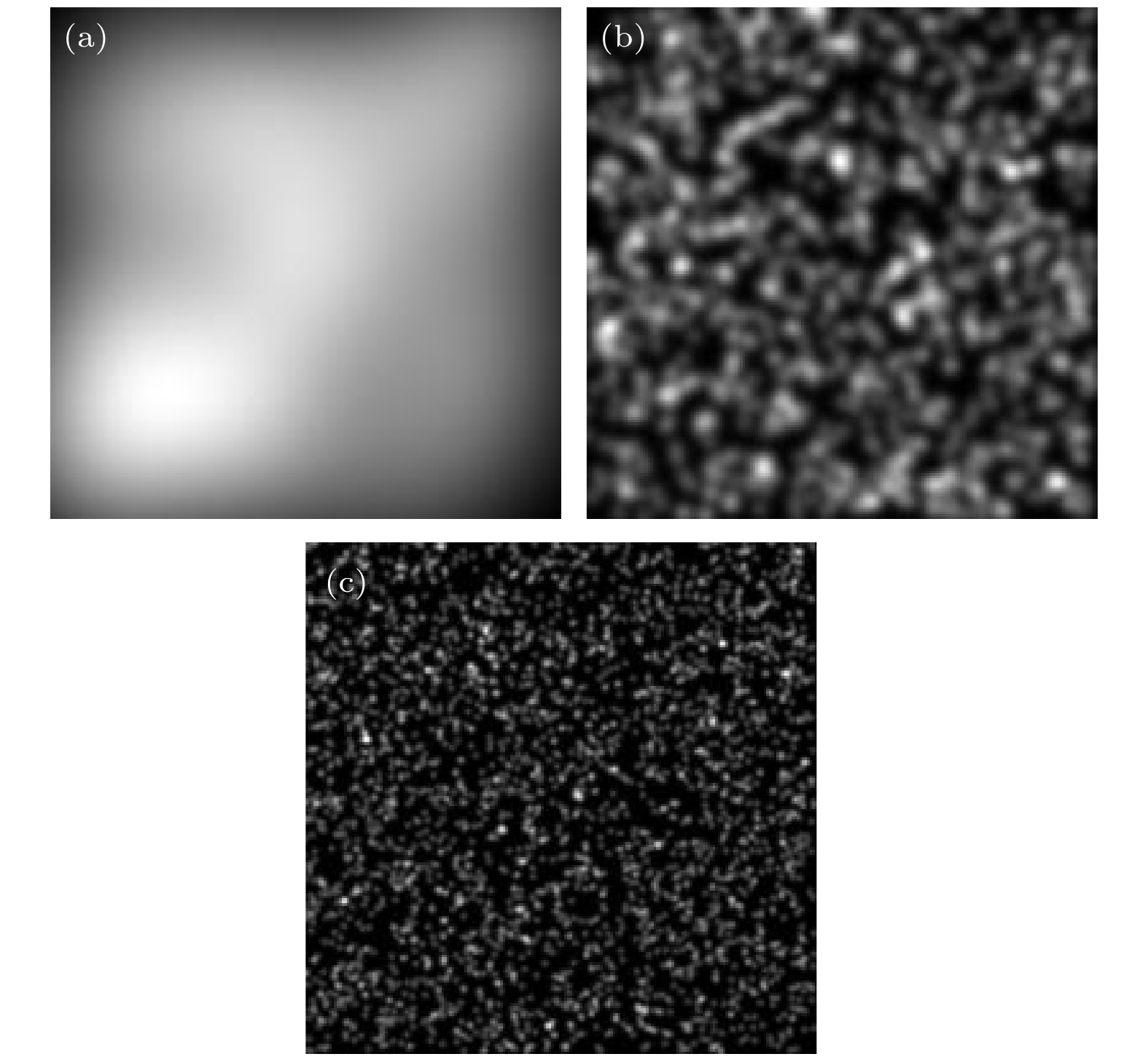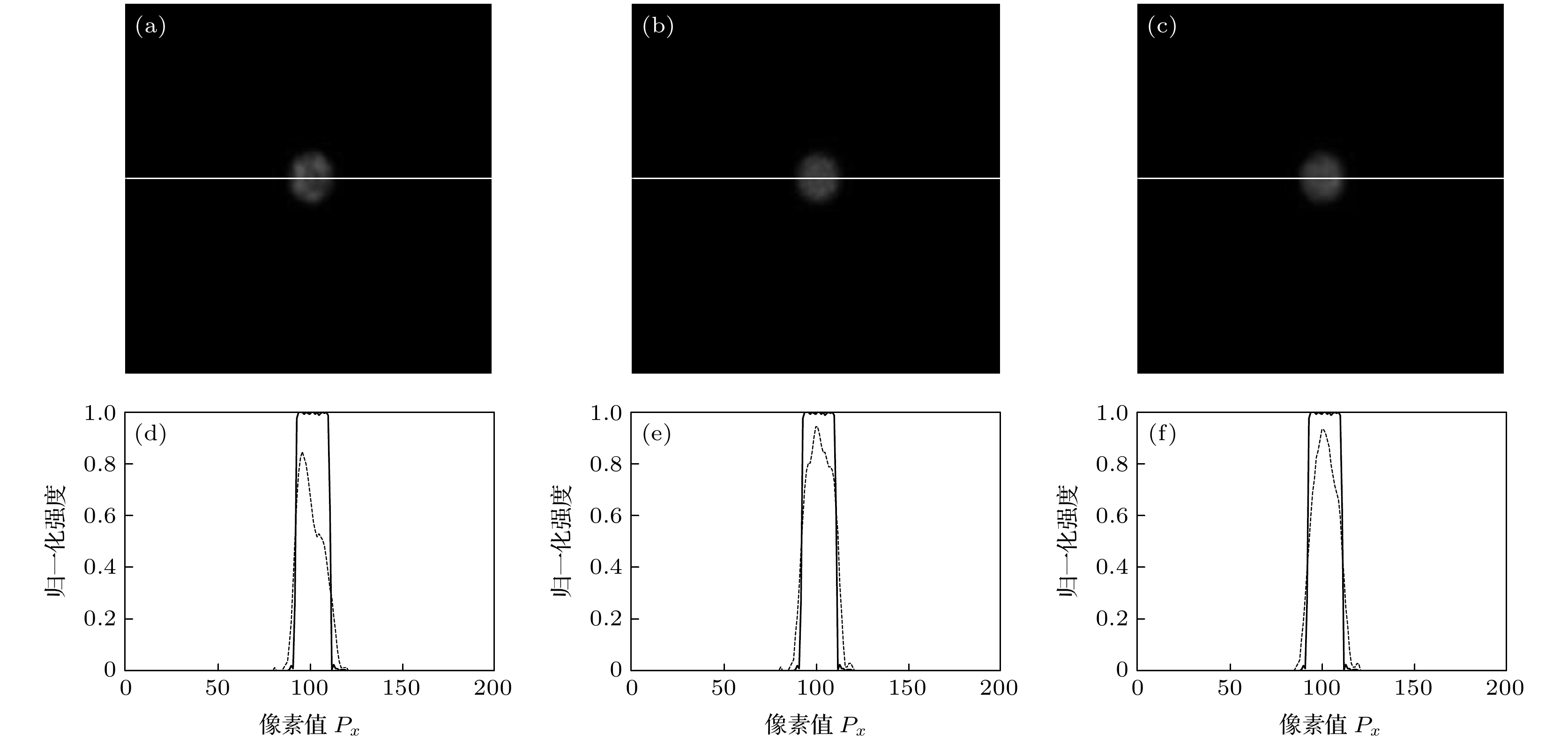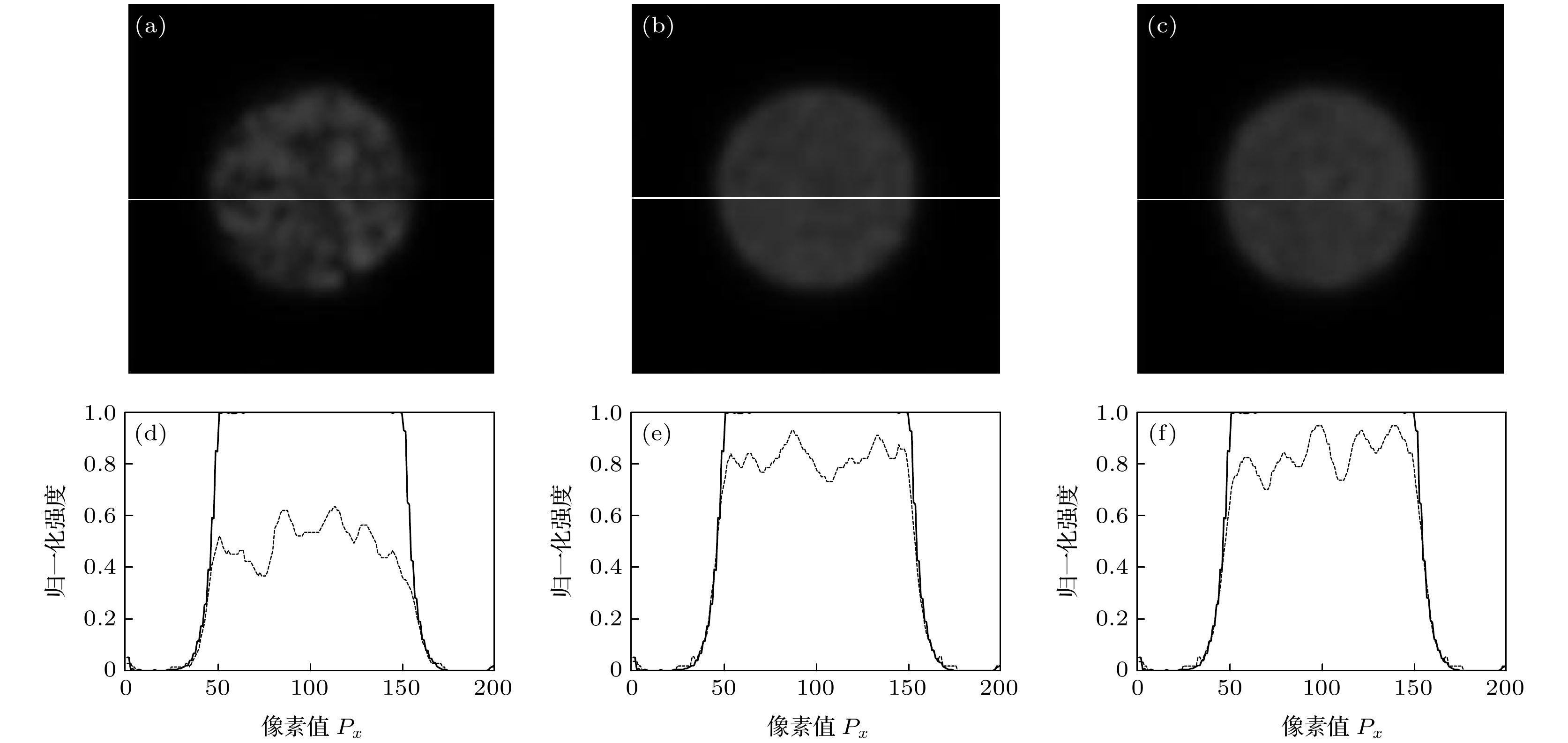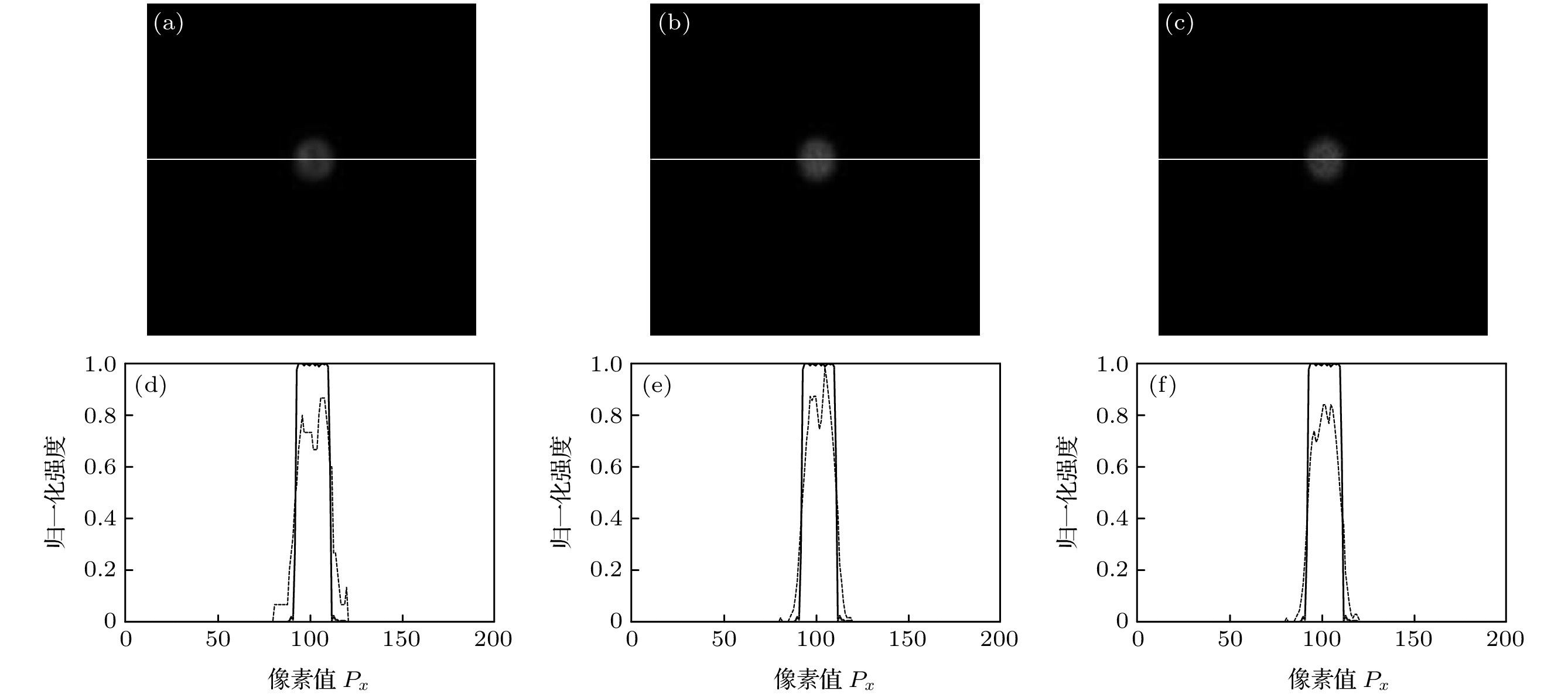-
In order to obtain the internal fine structure of biological tissues and living cells, the microscopic imaging technology is required to be capable of microscopy. In the wide-field fluorescence microscopy with dynamic speckle illumination, a series of dynamically changing speckle patterns are used to illuminate a biological sample in the whole field. The fluorescence sectioning images of sample’s three-dimensional structural are obtained by extracting intensely changing fluorescence signals in the focal plane. In this paper, the process of obtaining fluorescence sectioning images by the fluorescence microscopy is studied by theoretical analysis and simulation. Two main factors affecting the imaging quality of fluorescence sectioning image are analyzed, which are the number of original fluorescence images recorded by CCD and granularity of diffuser. The simulation results indicates that the imaging quality of fluorescence sectioning images first increases and then tends to saturation with the number of original fluorescence images increasing. It first increases and then decreases with the graininess of diffusers increasing. Considering the imaging quality and imaging time, when the number of original fluorescence images is 60 that is used to extract fluorescence sectioning images, and the granularity of diffuser is about 1000, the high spatial resolution fluorescence sectioning images with contrast higher than 85% can be obtained. Theoretical analysis and simulation research provide a theoretical basis and guidance for designing the system structure, implementing and optimizing the wide-field fluorescence microscopy with dynamic speckle illumination.
-
Keywords:
- speckle /
- fluorescence microscopy /
- sectioning imaging /
- wide-field illumination
[1] Minsky M US Patent 3013467 [1957-12-19]
[2] Minsky M 1988 Scanning 10 128
 Google Scholar
Google Scholar
[3] Kohen E, Hirschberg J G 1989 Cell Structure and Function by Microspectrofluorometry (San Diego, CA: Academic) p13
[4] Tsien R Y, Miyawaki A 1998 Science 280 1954
 Google Scholar
Google Scholar
[5] Wilson T, Sheppard C 1984 Theory and Practice of Scanning Optical Microscopy (Orlando, FL: Academic) p47
[6] Pawley J B 1995 Handbook of Biological Confocal Microscopy (New York: Plenum) p9
[7] Ikagawa H, Yoneda M, Iwaki M, Isogai Z, Tsujii K, Yamazaki R, Kamiya T, Zako M 2005 Invest. Ophthalmol. Vis. Sci. 46 2531
 Google Scholar
Google Scholar
[8] Szeto H H, Schiller P W, Zhao K, Luo G X 2004 FASEB J. 19 118
[9] Mason W T 1999 Fluorescent and Luminescent Probes for Biological Activity (San Diego, CA: Academic) p99
[10] Somekh M G, See C W, J Goh 2000 Opt. Comm. 174 75
 Google Scholar
Google Scholar
[11] Ventalon C, Mertz J 2005 Opt. Lett. 30 3350
 Google Scholar
Google Scholar
[12] Ventalon C, Mertz J 2006 Opt. Express 14 7198
 Google Scholar
Google Scholar
[13] 林浩铭, 邵永红, 屈军乐, 尹君, 陈思平, 牛憨笨 2008 物理学报 57 7641
 Google Scholar
Google Scholar
Lin H M, Shao Y H, Qu J L, Yin J, Chen S P, Niu H B 2008 Acta Phys. Sin. 57 7641
 Google Scholar
Google Scholar
[14] Wilson T, Juskaitis R, Neil M A A, Kozubek M 1996 Opt. Lett. 21 1879
 Google Scholar
Google Scholar
-
图 3 颗粒度为1000时, 半径为R的小球样品荧光层析图像 (a)—(c)及中心位置处荧光信号归一化强度(d)—(f) (a), (d) N = 20; (b), (e) N = 60; (c), (f) N = 200
Figure 3. The fluorescence sectioning images (a)–(c) of a small spherical sample with a radius of R and the normalized intensity (d)–(f) of the fluorescence signal at the center position with the granularity of diffuser being 1000: (a), (d) N = 20; (b), (e) N = 60; (c), (f) N = 200.
图 4 颗粒度为500时, 半径为10R的小球样品荧光层析图像 (a)—(c)及中心位置处荧光信号归一化强度(d)—(f) (a), (d) N = 20; (b), (e) N = 60; (c), (f) N = 200
Figure 4. The fluorescence sectioning images (a)–(c) of a small spherical sample with a radius of 10R and the normalized intensity (d)–(f) of the fluorescence signal at the center position with the granularity of diffuser being 500: (a), (d) N = 20; (b), (e) N = 60; (c), (f) N = 200.
图 5 不同颗粒度条件下, 层析图像荧光信号归一化强度平均值与原始荧光图像数量之间的关系 (a)小球样品; (b)大球样品
Figure 5. When the granularities of diffusers are different, the relationships between the average values of the normalized intensity of the fluorescence signals of sectioning images and the numbers of the original fluorescence images: (a) Small ball; (b) large ball.
图 6 CCD记录120幅原始荧光图像时, 半径为R的小球样品荧光层析图像 (a)—(c)及中心位置处荧光信号归一化强度 (d)—(f) (a), (d) G =100; (b), (e) G =1000; (c), (f) G = 3000
Figure 6. The fluorescence sectioning images (a)–(c) of a small spherical sample with a radius of R and the normalized intensity (d)–(f) of the fluorescence signal at the center position with 120 original fluorescence images being recorded by CCD: (a), (d) G =100; (b), (e) G =1000; (c), (f) G = 3000.
图 7 CCD记录120幅原始荧光图像时, 半径为10R的小球样品荧光层析图像 (a)—(c)及中心位置处荧光信号归一化强度 (d)—(f) (a), (d) G =20; (b), (e) G =1000; (c), (f) G = 3000
Figure 7. When 120 original fluorescence images are recorded by CCD and the different granularity of diffuser, G=20, 1000, 3000, The fluorescence sectioning images (a)–(c) of a small spherical sample with a radius of 10R and the normalized intensity (d)–(f) of the fluorescence signal at the center position with 120 original fluorescence images being recorded by CCD: (a), (d) G =20; (b), (e) G =1000; (c), (f) G = 3000.
图 8 CCD记录不同原始荧光图像数量时, 层析图像荧光信号归一化强度平均值与散斑颗粒度之间的关系 (a)小球样品; (b)大球样品
Figure 8. The relationships between the average values of the normalized intensity of the fluorescence signals of sectioning images and the diffuser granularities with different numbers of the original fluorescence images being recorded by CCD: (a) Small ball; (b) large ball.
-
[1] Minsky M US Patent 3013467 [1957-12-19]
[2] Minsky M 1988 Scanning 10 128
 Google Scholar
Google Scholar
[3] Kohen E, Hirschberg J G 1989 Cell Structure and Function by Microspectrofluorometry (San Diego, CA: Academic) p13
[4] Tsien R Y, Miyawaki A 1998 Science 280 1954
 Google Scholar
Google Scholar
[5] Wilson T, Sheppard C 1984 Theory and Practice of Scanning Optical Microscopy (Orlando, FL: Academic) p47
[6] Pawley J B 1995 Handbook of Biological Confocal Microscopy (New York: Plenum) p9
[7] Ikagawa H, Yoneda M, Iwaki M, Isogai Z, Tsujii K, Yamazaki R, Kamiya T, Zako M 2005 Invest. Ophthalmol. Vis. Sci. 46 2531
 Google Scholar
Google Scholar
[8] Szeto H H, Schiller P W, Zhao K, Luo G X 2004 FASEB J. 19 118
[9] Mason W T 1999 Fluorescent and Luminescent Probes for Biological Activity (San Diego, CA: Academic) p99
[10] Somekh M G, See C W, J Goh 2000 Opt. Comm. 174 75
 Google Scholar
Google Scholar
[11] Ventalon C, Mertz J 2005 Opt. Lett. 30 3350
 Google Scholar
Google Scholar
[12] Ventalon C, Mertz J 2006 Opt. Express 14 7198
 Google Scholar
Google Scholar
[13] 林浩铭, 邵永红, 屈军乐, 尹君, 陈思平, 牛憨笨 2008 物理学报 57 7641
 Google Scholar
Google Scholar
Lin H M, Shao Y H, Qu J L, Yin J, Chen S P, Niu H B 2008 Acta Phys. Sin. 57 7641
 Google Scholar
Google Scholar
[14] Wilson T, Juskaitis R, Neil M A A, Kozubek M 1996 Opt. Lett. 21 1879
 Google Scholar
Google Scholar
Catalog
Metrics
- Abstract views: 8142
- PDF Downloads: 129
- Cited By: 0














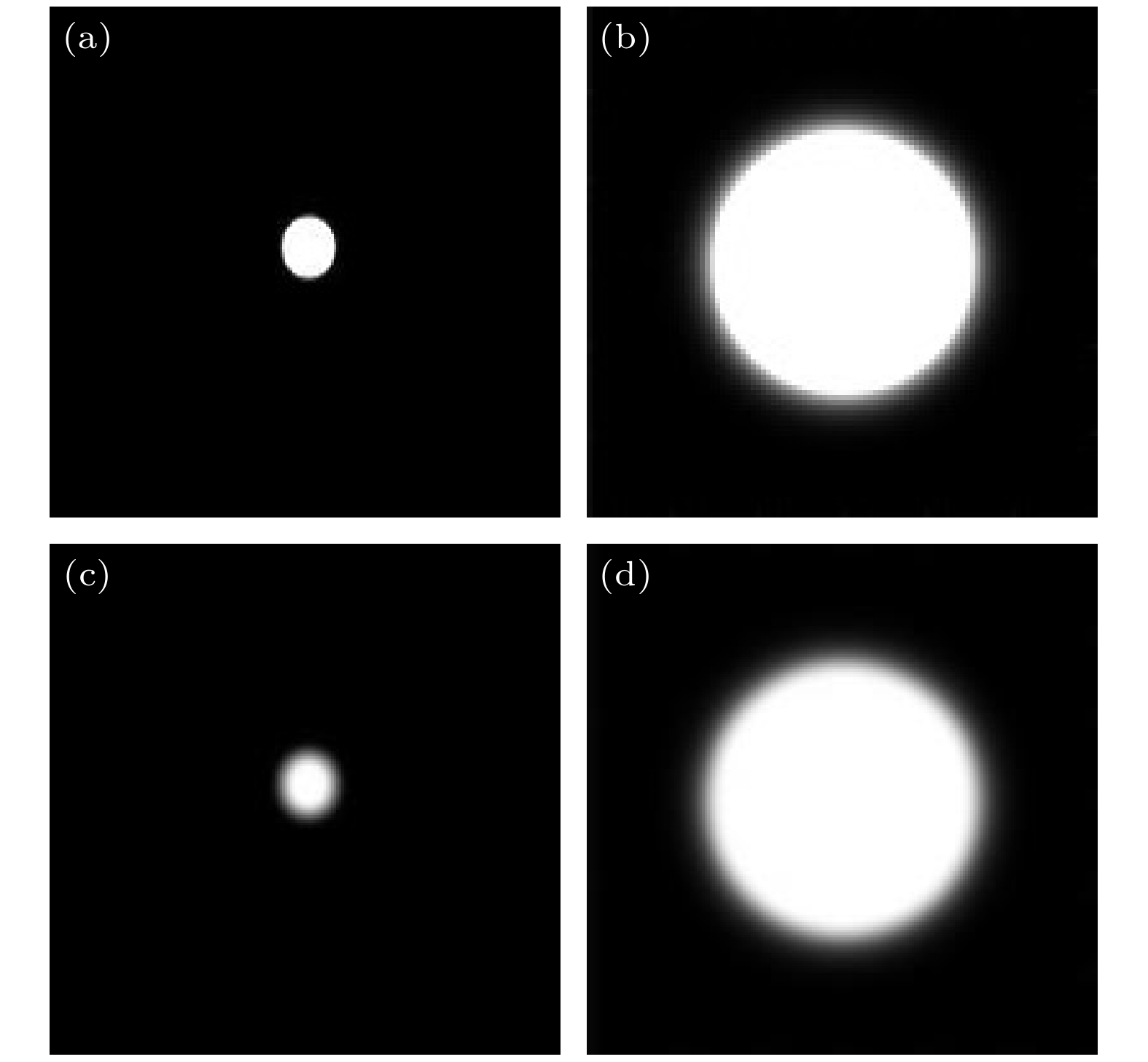
 DownLoad:
DownLoad:
